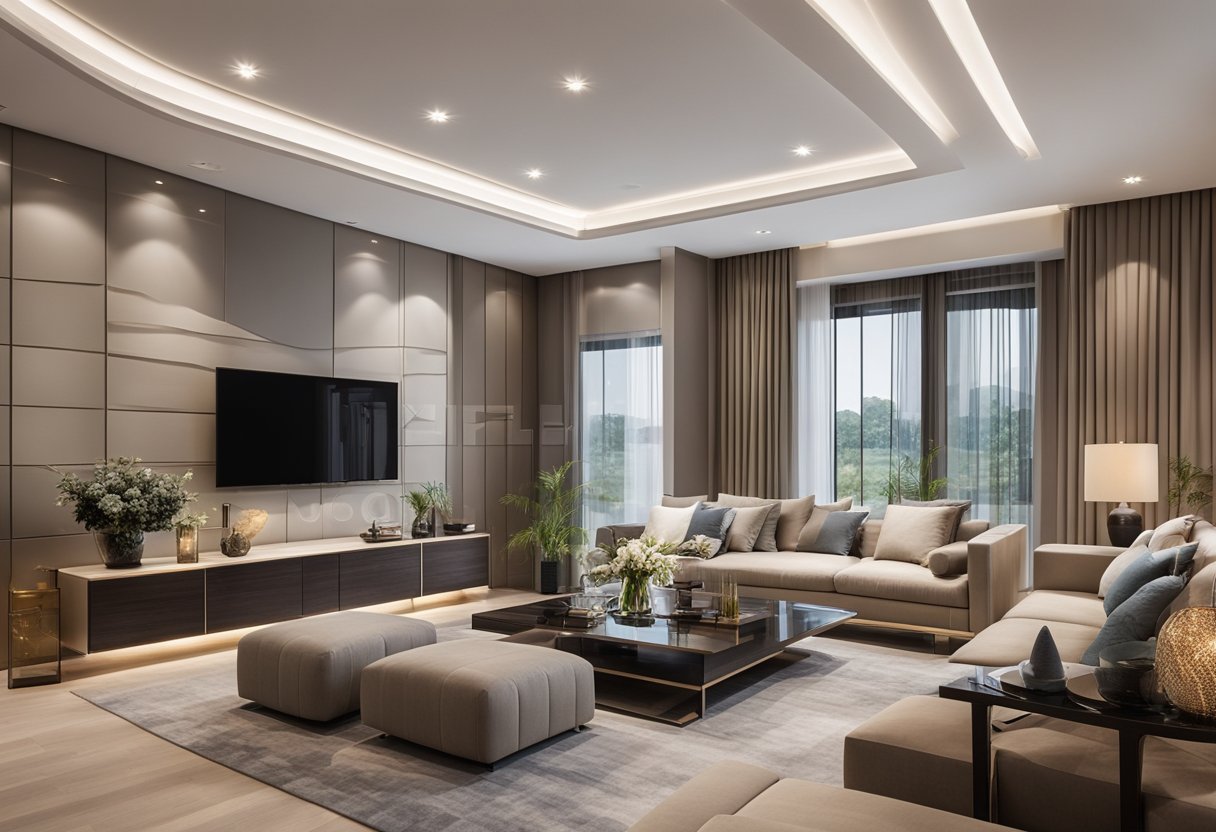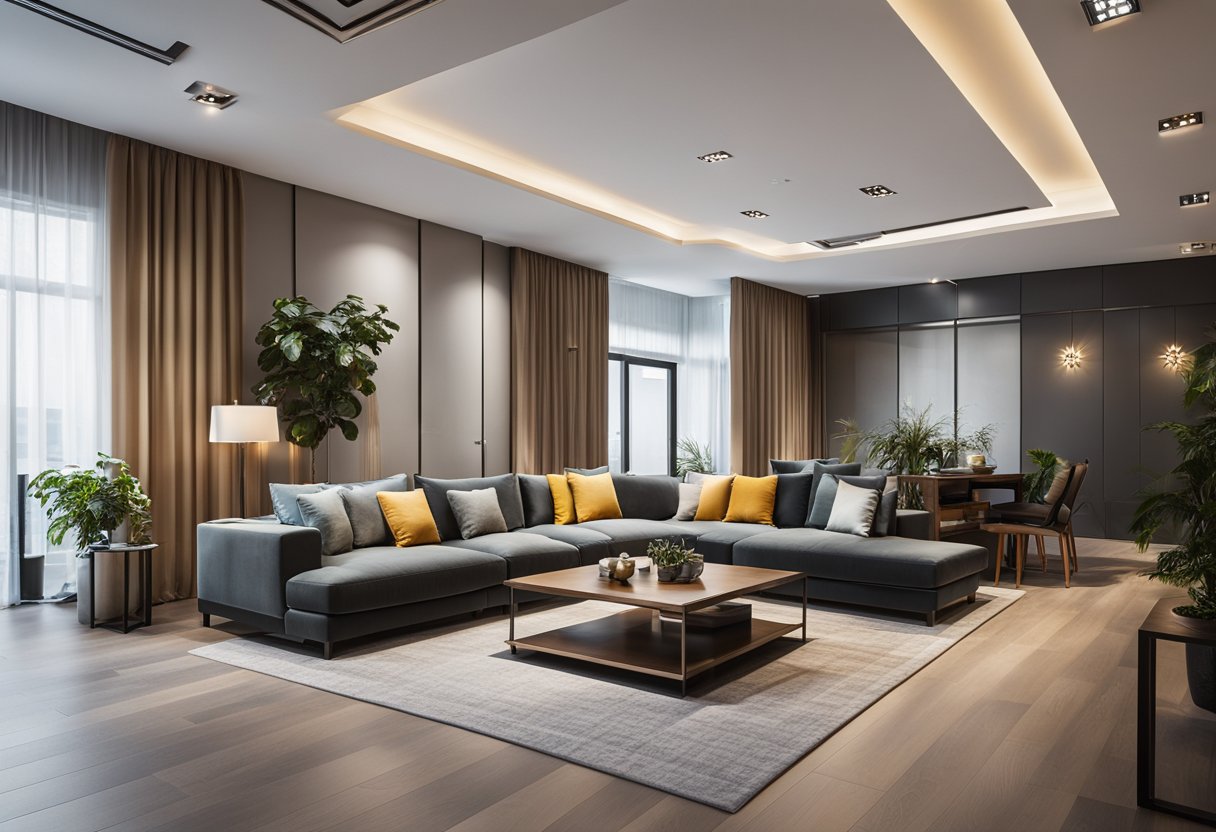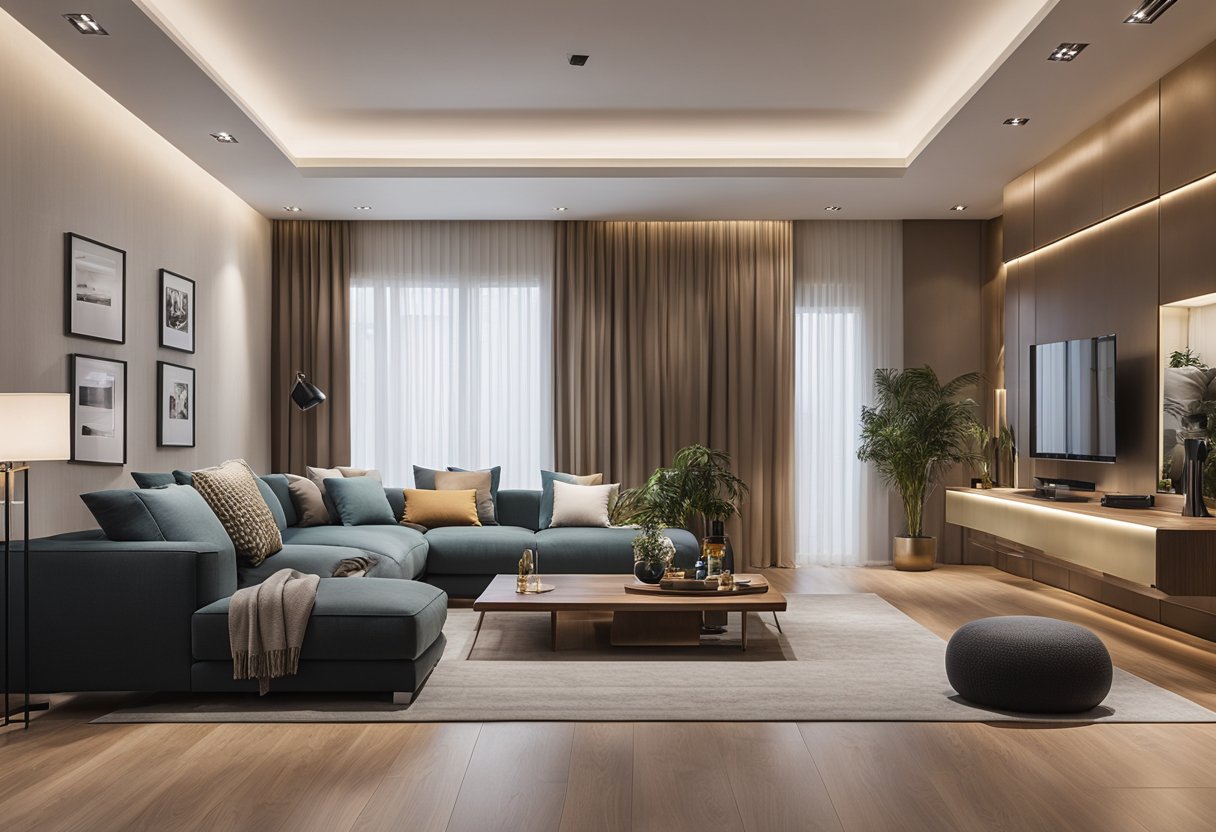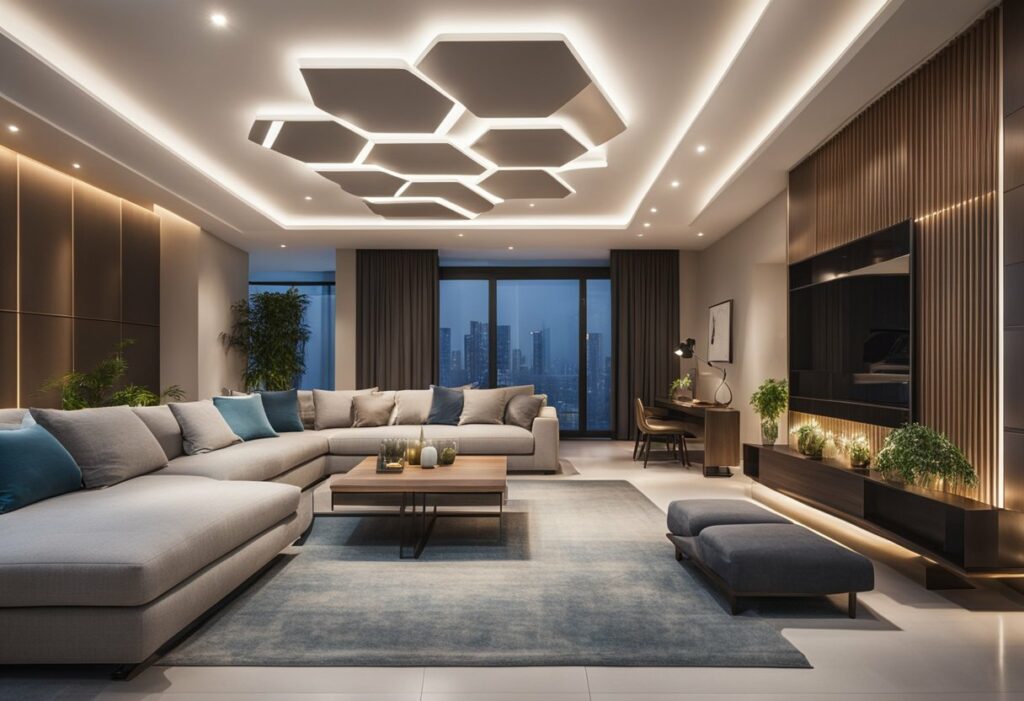Best False Ceiling Design for Living Room: Elevate Your Home Decor
Are you looking to add a touch of elegance to your living room? A false ceiling design might just be what you need. False ceilings, also known as dropped ceilings or suspended ceilings, have become increasingly popular in recent years. They are a great way to add a touch of aesthetic appeal to your home while also serving a functional purpose.

Exploring False Ceiling Materials and Styles False ceilings come in a variety of materials and styles. Some popular materials include gypsum, wood, metal, and PVC. Each material has its own unique characteristics and can be used to achieve different design goals. For example, a wooden false ceiling can add warmth and natural beauty to your living room, while a metal false ceiling can create a modern and industrial look.
Designing for Functionality and Aesthetics When designing a false ceiling for your living room, it’s important to consider both functionality and aesthetics. The right false ceiling design can help to improve the acoustics of your living room, hide unsightly wires and pipes, and even improve energy efficiency. At the same time, you want to choose a design that complements the overall aesthetic of your home and reflects your personal style.
Key Takeaways
- False ceilings are a popular way to add aesthetic appeal to your living room while also serving a functional purpose.
- When exploring false ceiling materials and styles, consider the unique characteristics of each material and how it can help you achieve your design goals.
- When designing a false ceiling for your living room, consider both functionality and aesthetics to create a design that improves the acoustics of your living room, hides unsightly wires and pipes, and complements the overall aesthetic of your home.
Exploring False Ceiling Materials and Styles

False ceilings offer a world of design possibilities for your living room. From gypsum to wood, PVC to metal, there are a variety of materials to choose from when designing your false ceiling. In this section, we will explore some of the most popular materials and styles for false ceilings.
Gypsum vs POP: Choosing the Right Material
Gypsum and POP (Plaster of Paris) are two of the most popular materials for false ceilings. Gypsum is a lightweight material that is easy to install and fire-resistant. It is also environmentally friendly, making it a great choice for eco-conscious homeowners. POP, on the other hand, is a heavier material that is more durable than gypsum. It is also more versatile and can be moulded into a variety of shapes and designs.
When choosing between gypsum and POP, consider the overall design of your living room. If you want a more minimalistic look, gypsum is a great choice. It is also a good option if you want to reduce the weight of your ceiling. If you want a more intricate design, POP is the way to go. It is also a better choice if you want a more durable ceiling that can withstand wear and tear.
Wooden Elegance: Incorporating Wood into Your Design
Wooden false ceilings add warmth and elegance to any living room. They are also a great way to incorporate natural materials into your home. Wooden false ceilings come in a variety of styles, from rustic to modern. They can also be stained or painted to match the overall design of your living room.
When choosing a wooden false ceiling, consider the type of wood you want to use. Cedar and pine are popular choices for their durability and natural beauty. Teak and mahogany are also great choices for their rich colour and texture.
Innovative PVC and Metal False Ceilings
PVC and metal false ceilings offer a modern and innovative look for your living room. PVC is a lightweight and durable material that is easy to install. It is also moisture-resistant, making it a great choice for humid environments. Metal false ceilings, on the other hand, offer a sleek and industrial look. They are also fire-resistant and durable.
When choosing between PVC and metal false ceilings, consider the overall design of your living room. PVC is a great choice if you want a more minimalist look. It is also a good option if you want a ceiling that is easy to maintain. Metal false ceilings, on the other hand, are a better choice if you want a more industrial look. They are also a good option if you want a ceiling that is fire-resistant and durable.
In conclusion, when choosing the right false ceiling material and style for your living room, consider the overall design of your home and your personal preferences. Whether you choose gypsum, POP, wood, PVC, or metal, a false ceiling is a great way to add style and sophistication to your living space.
Designing for Functionality and Aesthetics

When it comes to designing a false ceiling for your living room, you want to strike the perfect balance between functionality and aesthetics. Here are some key considerations to keep in mind:
Optimising Lighting and Acoustics
One of the primary functions of a false ceiling is to improve the lighting and acoustics of your living room. By strategically placing lights and speakers within the ceiling, you can create a warm and inviting atmosphere that is perfect for relaxing or entertaining guests.
When it comes to lighting options, there are a variety of choices to consider. Cove lighting, layered lighting, and recessed lighting are all popular options that can help to create a unique and personalised look in your living room.
In addition to lighting, you may also want to consider sound insulation to help reduce noise from outside and improve the acoustics within your living room.
Balancing Ceiling Height and Room Proportions
Another important consideration when designing a false ceiling is balancing the ceiling height with the proportions of the room. A ceiling that is too low can make the room feel cramped and claustrophobic, while a ceiling that is too high can make the room feel cavernous and impersonal.
To find the right balance, it’s important to take into account the size and shape of your living room, as well as the height of your furniture and other decorative elements. A professional interior designer can help you create a design that is perfectly tailored to your space.
Integrating Service Lines with Style
Finally, it’s important to consider how you can integrate service lines such as air conditioning, electrical wiring, and plumbing into your false ceiling design. By incorporating these elements seamlessly into the design, you can create a clean and streamlined look that is both functional and aesthetically pleasing.
Some popular options for integrating service lines include using false beams or arches to hide the lines, or incorporating them into the design of the ceiling itself. Whatever option you choose, be sure to work with a professional contractor to ensure that your design is both safe and up to code.
Overall, designing a false ceiling for your living room is an exciting opportunity to create a space that is both functional and beautiful. By considering factors such as lighting, acoustics, ceiling height, and service lines, you can create a design that is perfectly tailored to your needs and preferences.
Frequently Asked Questions

What are the latest trends in false ceiling designs for spacious living rooms?
The latest trends in false ceiling designs for spacious living rooms include incorporating geometric shapes, using contrasting colours, and adding LED lights to create a dramatic effect. You can also opt for a layered false ceiling design that adds depth to your living room.
How can you select the perfect colour scheme for your living room’s false ceiling design?
When selecting a colour scheme for your living room’s false ceiling design, consider the existing colours in your living room. If your living room has neutral colours, you can opt for a bold and bright false ceiling design to add a pop of colour. Alternatively, if your living room has a lot of colours, you can choose a false ceiling design that complements the existing colours.
What are some exciting modern false ceiling designs suitable for small living rooms?
For small living rooms, you can opt for a simple false ceiling design that does not take up too much space. You can also choose a false ceiling design that incorporates mirrors to create an illusion of more space. Another popular option is to use a false ceiling design with recessed lighting to create a warm and inviting atmosphere.
Could you suggest some innovative false ceiling ideas that incorporate a fan?
Innovative false ceiling ideas that incorporate a fan include using a circular false ceiling design with a fan in the centre, or using a rectangular false ceiling design with a fan at one end. You can also opt for a false ceiling design that has a fan hidden behind a decorative grille.
What are the most popular materials currently used in false ceiling designs for living areas?
The most popular materials currently used in false ceiling designs for living areas include gypsum, wood, and metal. Gypsum is a popular choice because it is easy to work with and can be moulded into different shapes. Wood is a great option for those who want a natural look, while metal adds a modern touch to your living room.
How can you find inspiration for simple yet elegant false ceiling designs for your living room?
You can find inspiration for simple yet elegant false ceiling designs for your living room by browsing through home decor magazines, visiting home decor websites, or by consulting with a professional interior designer. You can also look for inspiration in nature, art, and architecture.



